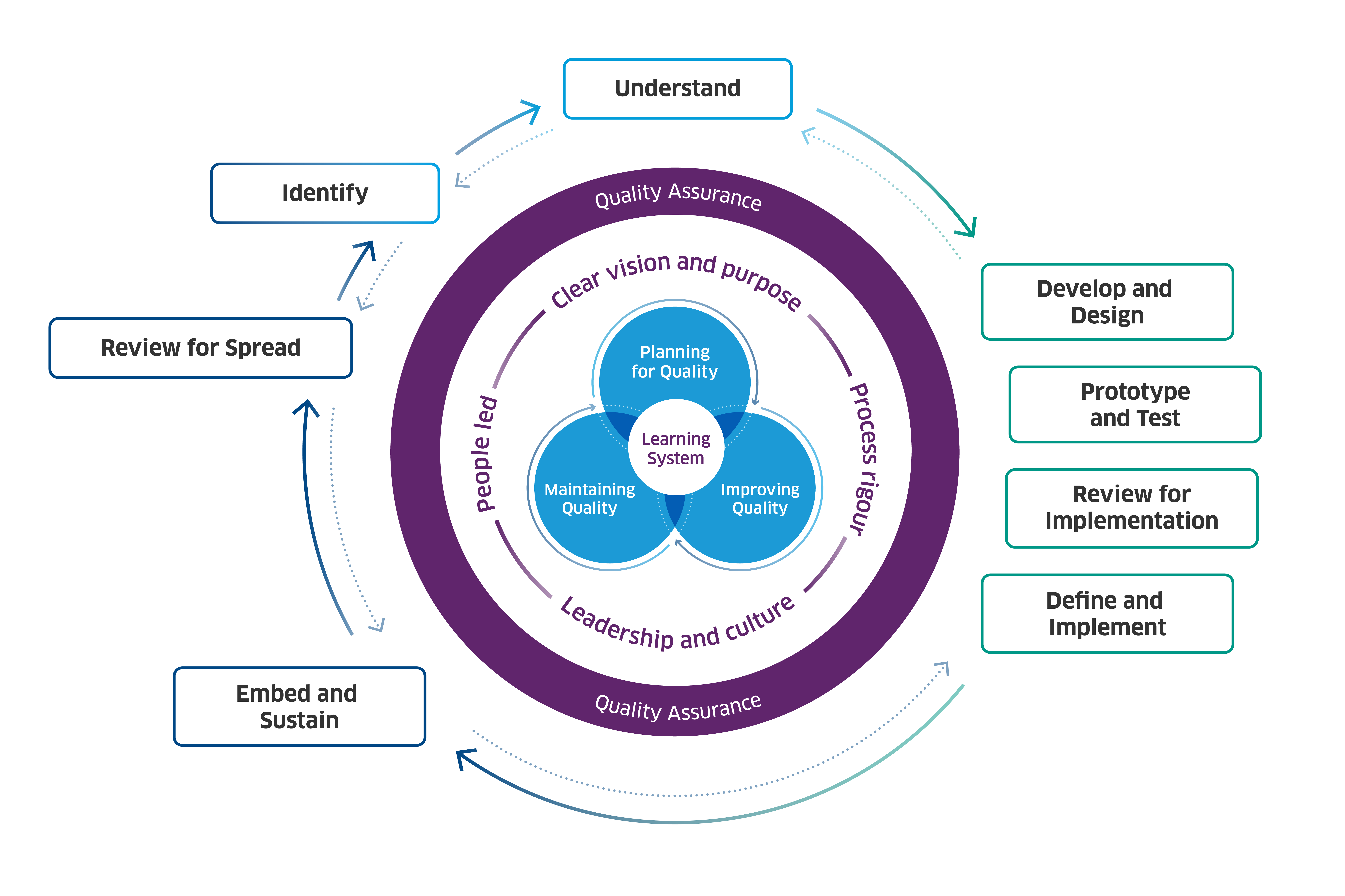The Reducing Psychoactive Medication – “Find the Why” project was led by the Care Inspectorate in partnership with HC One Care Homes. The project aimed to improve dementia care and reduce inappropriate use of psychoactive medicines for people with dementia. The full case study and summary are available below.

Steps of change
Identify
Identified the problem: a high level of prescribing sedating psychoactive medications for people with dementia in care homes, often used as a first-line response to stress and distress. Reviews of these medications were often delayed or inconsistent.
Understand
An evidence review and needs assessment identified concerns about the overuse and lack of timely review of psychoactive medications, and a lack of confidence or support to explore non-pharmacological alternatives. There was a need to understand the root causes (“the why”) of behaviours of concern.
Develop and design
A quality improvement programme was co-designed with eight HC-One Care Homes. The programme was voluntary and based on three principles: all teach, all learn, voluntary participation, and empowering frontline staff.
Prototype and test
Care homes tested small-scale interventions with 1–2 residents initially. Change ideas focused on: environment, personal care, activity and wellbeing, medication reviews, and staff practice.
Review for implementation
All care homes demonstrated improvements, including reductions in psychoactive medication use, improved resident wellbeing and quality of life, and increased staff confidence and job satisfaction. Data was tracked over time to assess effectiveness and guide adjustments.
Define and implement
There was an iterative implementation process. The programme ran over six months with three learning sessions. Staff were supported by the HC-One Dementia Care Team and Quality Improvement (QI) Advisors.
Embed and sustain
Staff ownership of change ideas promoted long-term adoption and sustainability. Tools became embedded in practice. Cohort 1 staff are now mentoring Cohort 2, supporting spread and continuity. Cultural shifts included valuing data, psychological safety, and frontline leadership.
Review for spread
The programme provided a structured format for future cohorts. The approach is being scaled up with support from mentors and QI frameworks. The model is seen as replicable and adaptable to other care settings.
Enablers of quality and change
Clear vision and purpose
A clear vision helped to provide direction, motivation, and alignment, including:
- a shared goal to reduce inappropriate psychoactive medication use
- a focus on person-centred care and understanding behaviours as expressions of unmet need
Leadership and culture
Leadership and culture were critical in driving the change forward, including:
- empowering frontline staff to lead change
- creating a psychologically safe environment for testing and learning
- promoting a culture of curiosity, courage, and continuous improvement
People-led
Ensuring a people led approach to change was essential, including:
- residents’ needs and preferences were central to all interventions
- families were involved in assessments and care planning
- staff were encouraged to “find the why” behind behaviours
Process rigour
Ensuring process rigour was key to ensuring high-quality and reliable outcomes, including:
- using quality improvement methodology (Plan-Do-Study-Act cycles)
- tracking data over time to measure impact
- developing structured tools to support consistency
